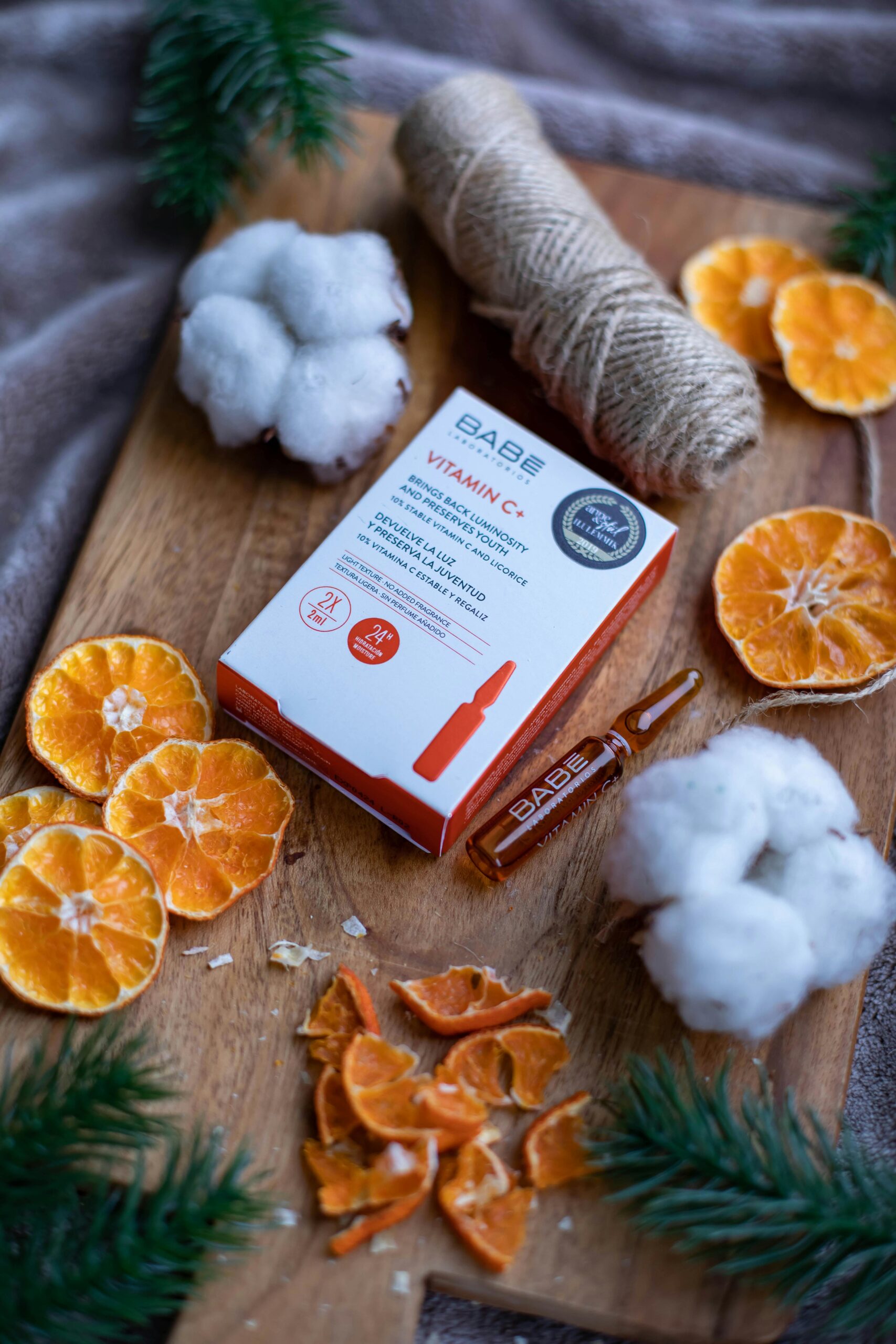Hormonal changes are a natural part of life, affecting individuals at various stages, from puberty to menopause. These fluctuations can significantly impact the skin, particularly for those with combination skin, which is characterised by both oily and dry areas. The oilier zones, typically the T-zone (forehead, nose, and chin), may become excessively greasy, while the drier areas, such as the cheeks, can feel tight and uncomfortable.
This duality can be perplexing, as the skin’s needs vary dramatically across different regions. Hormones such as oestrogen, progesterone, and testosterone play pivotal roles in regulating sebum production and skin hydration levels. For instance, during the menstrual cycle, oestrogen levels drop before menstruation, often leading to increased oiliness and breakouts in those with combination skin.
Moreover, hormonal imbalances can be exacerbated by stress, diet, and environmental factors. Stress triggers the release of cortisol, a hormone that can stimulate oil production in the skin. This can lead to an increase in acne and other blemishes, particularly in the oilier areas of the face.
Conversely, hormonal changes can also lead to a decrease in moisture retention, resulting in dryness and flakiness in other regions. Understanding these dynamics is crucial for developing an effective skincare routine that addresses the unique challenges posed by combination skin during hormonal fluctuations.
Summary
- Hormonal changes can affect combination skin, leading to excess oil production and dryness.
- Adjust your skincare routine to accommodate hormonal fluctuations by using gentle and balancing products.
- Manage excess oil production during hormonal imbalances by incorporating oil-controlling ingredients like salicylic acid.
- Address dryness and dehydration caused by hormonal changes with hydrating and moisturising products.
- Seek professional advice for managing hormonal acne and breakouts, and consider making dietary and lifestyle changes to support hormonal balance.
Adjusting Your Skincare Routine to Accommodate Hormonal Fluctuations
To effectively manage combination skin during hormonal changes, it is essential to tailor your skincare routine to address the varying needs of your skin. This may involve switching products based on your hormonal cycle or adjusting the frequency of certain treatments. For example, during the luteal phase of the menstrual cycle when oil production tends to increase, incorporating a gentle exfoliating product can help prevent clogged pores and breakouts.
Ingredients such as salicylic acid or glycolic acid can be beneficial in this regard, as they help to remove dead skin cells and reduce excess oil without overly drying out the skin. Conversely, during times when dryness is more pronounced, such as after menstruation or during periods of stress, it may be wise to focus on hydrating products. Look for moisturisers that contain hyaluronic acid or glycerin, which are known for their ability to attract and retain moisture in the skin.
Additionally, incorporating a nourishing facial oil can provide an extra layer of hydration without exacerbating oiliness in the T-zone. By being mindful of these fluctuations and adjusting your routine accordingly, you can create a balanced approach that caters to both the oily and dry areas of your skin.
Managing Excess Oil Production during Hormonal Imbalances
Excess oil production is a common concern for those with combination skin, particularly during hormonal imbalances. When hormones fluctuate, particularly during the menstrual cycle or periods of heightened stress, sebaceous glands may become overactive, leading to an oily complexion. To combat this issue effectively, it is crucial to adopt a multi-faceted approach that includes both topical treatments and lifestyle adjustments.
One effective strategy is to incorporate oil-absorbing products into your skincare routine. Clay masks or charcoal-based cleansers can help draw out impurities and excess sebum from the skin’s surface. In addition to topical treatments, lifestyle factors should not be overlooked.
Maintaining a consistent cleansing routine is vital; however, over-cleansing can strip the skin of its natural oils and trigger further oil production as a compensatory mechanism. Instead, opt for a gentle cleanser that effectively removes makeup and impurities without disrupting the skin’s barrier. Furthermore, consider incorporating blotting papers into your daily routine to manage shine throughout the day without adding additional product layers that could clog pores.
Addressing Dryness and Dehydration Caused by Hormonal Changes
While excess oil production is a significant concern for those with combination skin during hormonal fluctuations, dryness and dehydration can also pose challenges. Hormonal changes can lead to decreased moisture retention in the skin, resulting in tightness and flakiness in certain areas. To address this issue effectively, it is essential to focus on hydration and barrier repair.
Incorporating a hydrating serum containing ingredients like ceramides or niacinamide can help strengthen the skin’s barrier function while providing much-needed moisture. In addition to topical treatments, it is important to consider environmental factors that may contribute to dryness. For instance, exposure to harsh weather conditions or indoor heating can exacerbate dehydration.
To combat this, consider using a humidifier in your living space to maintain optimal humidity levels. Additionally, drinking plenty of water throughout the day can support overall skin hydration from within. By prioritising hydration and barrier repair in your skincare routine, you can effectively combat dryness caused by hormonal changes.
Incorporating Gentle and Balancing Products into Your Skincare Regimen
When dealing with combination skin affected by hormonal fluctuations, it is crucial to choose products that are both gentle and balancing. Harsh ingredients can exacerbate sensitivity and lead to further imbalances in oil production and hydration levels. Look for formulations that are free from artificial fragrances and harsh chemicals, opting instead for soothing botanicals like chamomile or aloe vera that can calm irritated skin.
Balancing products are particularly beneficial for combination skin as they help regulate oil production while providing hydration where needed. Toners containing witch hazel or rose water can help refine pores and control excess oil without stripping the skin of its natural moisture. Additionally, lightweight moisturisers that contain both hydrating and mattifying ingredients can provide a perfect balance for those struggling with combination skin during hormonal changes.
By carefully selecting gentle and balancing products, you can create a skincare regimen that supports your skin’s unique needs.
Seeking Professional Advice for Managing Hormonal Acne and Breakouts
For individuals experiencing persistent hormonal acne or breakouts despite their best efforts at home, seeking professional advice may be necessary. Dermatologists can provide tailored treatment plans that address specific concerns related to hormonal fluctuations. This may include prescription medications such as topical retinoids or oral contraceptives that help regulate hormone levels and reduce acne flare-ups.
In addition to medical treatments, dermatologists can also recommend professional treatments such as chemical peels or laser therapy that target acne scarring and improve overall skin texture. These interventions can be particularly beneficial for those with combination skin who may struggle with both active breakouts and residual scarring from previous acne episodes. By consulting with a professional, individuals can gain valuable insights into their unique skin concerns and develop a comprehensive plan for managing hormonal acne effectively.
Making Dietary and Lifestyle Changes to Support Hormonal Balance
Dietary choices play a significant role in supporting hormonal balance and overall skin health. Consuming a diet rich in whole foods—such as fruits, vegetables, lean proteins, and healthy fats—can provide essential nutrients that support hormone regulation. Omega-3 fatty acids found in fatty fish like salmon or plant-based sources such as flaxseeds have been shown to reduce inflammation and may help alleviate acne symptoms associated with hormonal fluctuations.
In addition to dietary changes, lifestyle factors such as stress management and regular exercise are crucial for maintaining hormonal balance. Engaging in activities like yoga or meditation can help reduce stress levels and subsequently lower cortisol production, which is linked to increased oiliness in the skin. Furthermore, regular physical activity promotes circulation and helps deliver oxygen and nutrients to the skin while aiding in detoxification processes.
By adopting a holistic approach that encompasses dietary and lifestyle changes, individuals can support their hormonal health and improve their skin’s overall condition.
Embracing and Accepting Your Skin’s Natural Fluctuations due to Hormonal Changes
Ultimately, embracing your skin’s natural fluctuations due to hormonal changes is an essential aspect of self-acceptance and confidence. Recognising that these changes are a normal part of life can alleviate some of the stress associated with managing combination skin. It is important to remember that no one has perfectly flawless skin all the time; fluctuations are part of being human.
Practising self-compassion during times of hormonal imbalance can also foster a healthier relationship with your skin. Instead of focusing solely on perceived imperfections or breakouts, consider celebrating your unique features and understanding that they are part of your individuality. Engaging in positive self-talk and surrounding yourself with supportive communities can further enhance this acceptance journey.
By embracing your skin’s natural rhythms and fluctuations, you cultivate resilience and confidence that transcends beyond mere appearances.
If you are struggling with hormonal changes affecting your combination skin, you may also find this article on how to deal with hormonal acne helpful. Understanding how hormones can impact your skin can provide valuable insight into managing breakouts and maintaining a healthy complexion. Additionally, incorporating professional facials and regular use of face masks, as discussed in this article on the benefits of professional facials and this article on the benefits of using face masks regularly, can further enhance your skincare routine and help address any skin concerns you may have.




